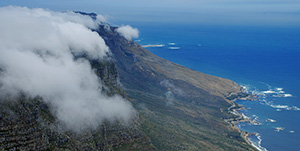
I’ve really been enjoying my new camera (a Nikon D80) since buying it in January. And other than the occasional blown highlights, I find that it usually takes pictures just as I’ve intended.
One helpful tip which I picked up from my brother (who also has a D80) is to manually set the white balance in each new shooting environment (such as incandescent, fluorescent, sunlight, or others). I don’t mean to imply that the D80 is bad at guesstimating a scene’s white balance on its own, but it’s an easy setting and often makes a real difference. (The D80’s white balance settings are covered on p.58 of the US-English manual, for what it’s worth.)
If you’re into photography, you may already be familiar with gray cards — a uniformly gray rectangle that can be used to fine-tune a shot’s exposure. A seemingly related device — but one which serves a completely different purpose — is a white balance card. These are also typically rectangles and they're usually gray. Rather than an exposure tool, however, white balance cards are used to provide a white-balance reference point within images (I’ll explain).
If you’ve ever played around with your camera’s white balance settings (or even if you’ve stuck with your camera’s automatic white balance mode), you’ve probably run across the occasional shot which ended up with the wrong white balance — one common symptom is Caucasian skin looking a bit yellowish or even orange-tinged. This happens because the light within the scene may not have been “white” in the first place; for instance, light during a sunset of very often reddish or orange. And even though the human eye can quickly adapt to varying colors of light, cameras aren’t always so lucky.
This is where a white balance card comes in. A white balance card is calibrated to a specific shade of gray; so, when it comes time to color-correct a photo, you can tell your image editor (such as Photoshop) to “adjust this photo’s color until the point under my eyedropper matches this certain shade of gray”. And if that sounds complicated, it’s really not — Adobe Bridge (a sister app to Adobe Photoshop) has an eyedropper that’s preconfigured for just this purpose. I’ve had a WhiBal white balance card for the past few months and I’ve been impressed by how easy it’s been to get perfect white balance in my shots.
Consider the photo at the top of this post, for instance. If you’ve seen my shots from this year’s SXSW, you may recognize it as one of my shots from the Helvetica screening. As it turns out, I had been taking some shots outside earlier in the day and, as it was cloudy at the time, I had my white balance set to “cloudy” — when it came time for the screening, though, I forgot to change it back to a more appropriate white balance setting (d’oh!). However, because I had taken a few WhiBal shots while I was there, none of that mattered. It’s like having a bottomless stack of “Get Out of Jail Free” cards when it comes to white balance.
I consider photography one of my hobbies, but I’m not one for frivolous baubles. Having said that, I make an exception for my WhiBal. It’s easy to carry around and the benefits are really there. And if you don’t quite have your head wrapped around this “white balance thing”, not to worry — the WhiBal site has section with videos that go over white balance and an example workflow with a WhiBal. I don’t have any affiliation with this company — I’m just a really satisfied customer.




